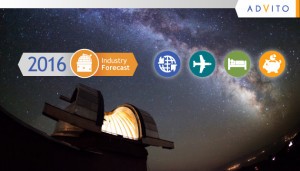 The way travel managers communicate program performance to internal stakeholders is a critical part of garnering their support and reassuring them that the travel program’s goals align with broader corporate objectives.
The way travel managers communicate program performance to internal stakeholders is a critical part of garnering their support and reassuring them that the travel program’s goals align with broader corporate objectives.
BCD Travel Senior Director Lisa Wilke has made it her mission to help clients develop travel program reporting that resonates. Here are her top tips:
Know your audience
“Not only do people in different company roles require different kinds of information, but we all bring unique working styles and personality types to our roles,” Wilke said. “Your first step toward effective communication is to consider stakeholders’ needs and how they like to receive information.” Here are a few examples:
- Travelers and human resources representatives generally respond well to an empathetic communication style that focuses on employee service and convenience.
- Finance and procurement professionals need to see the numbers.
- Executives like big-picture metrics that demonstrate how your efforts affect the whole organization.
- No matter the audience, time is a scarce commodity for everyone, so give them the most compelling information early, and use visuals. If you grab their attention in the first 8 seconds — and then keep your whole presentation brief — they’ll listen.
Understand your objectives
What is the purpose behind your message? “Narrow your focus so you communicate your most important points clearly and thoroughly,” Wilke advised. She suggests honing the message by asking the following questions:
- How will you measure success—by tracking savings, demonstrating specific improvements or something else?
- What are you seeking from your audience? For example, do you want their buy-in for specific initiatives?
- Which two or three key performance indicators or initiatives should take center stage?
Identify the right data
Make sure your data fits the points you’re making in your presentation. Do you need pre- and post-trip data from your TMC? Does traveler spending on credit cards tell the story? Can supplier information give you additional insights into expenditures? Does your data have a shelf life? Wilke said that last question often goes unasked, but timeliness is essential to the effectiveness of your communication. “If you need to influence traveler behavior, for example, then the timing is important,” she explained. “Post-trip data presented months after it’s collected loses its relevance.”
Choose the right visual
“We are all visual creatures who learn with our eyes, so select the right visual for the stakeholders you’re reporting to,” Wilke advised. If they prefer charts and graphs, give them a PowerPoint. If they like lists, send them a post-presentation PDF. If they require a lot of detail, such as a tally of out-of-compliance travelers or departments, provide a spreadsheet. Then employ these strategies:
- Make sure all your information is actionable. Data without a purpose muddies your message.
- Don’t overanalyze. Be bold about explaining conclusions that can be drawn from the data.
- Avoid travel jargon and acronyms.
- Make sure any supplemental information you provide is clear, stays on point and supports your message.
- Tell stakeholders exactly what you need from them, and give them a deadline.
Want a CEO’s perspective on effective reporting techniques? Check out BCD Travel President and CEO John Snyder’s Inside View column. And ask your account manager how BCD can provide the information you need to tell a compelling story about travel program success.

